Pond & Lake Maintenance Plans
Clear Lake Program
Our Clear Lake Program provides regularly scheduled lake inspections, which focus on proactive techniques to keep aquatic weeds and algae under control so they do not become an unsightly problem. The Clear Lake Program visits also focus on pond and lake equipment maintenance and servicing. The Clear Lake Program is very popular with commercial properties as well as private land owners.

Potentially Toxic (PTOX) Cyanobacteria Screening (Harmful Algae)
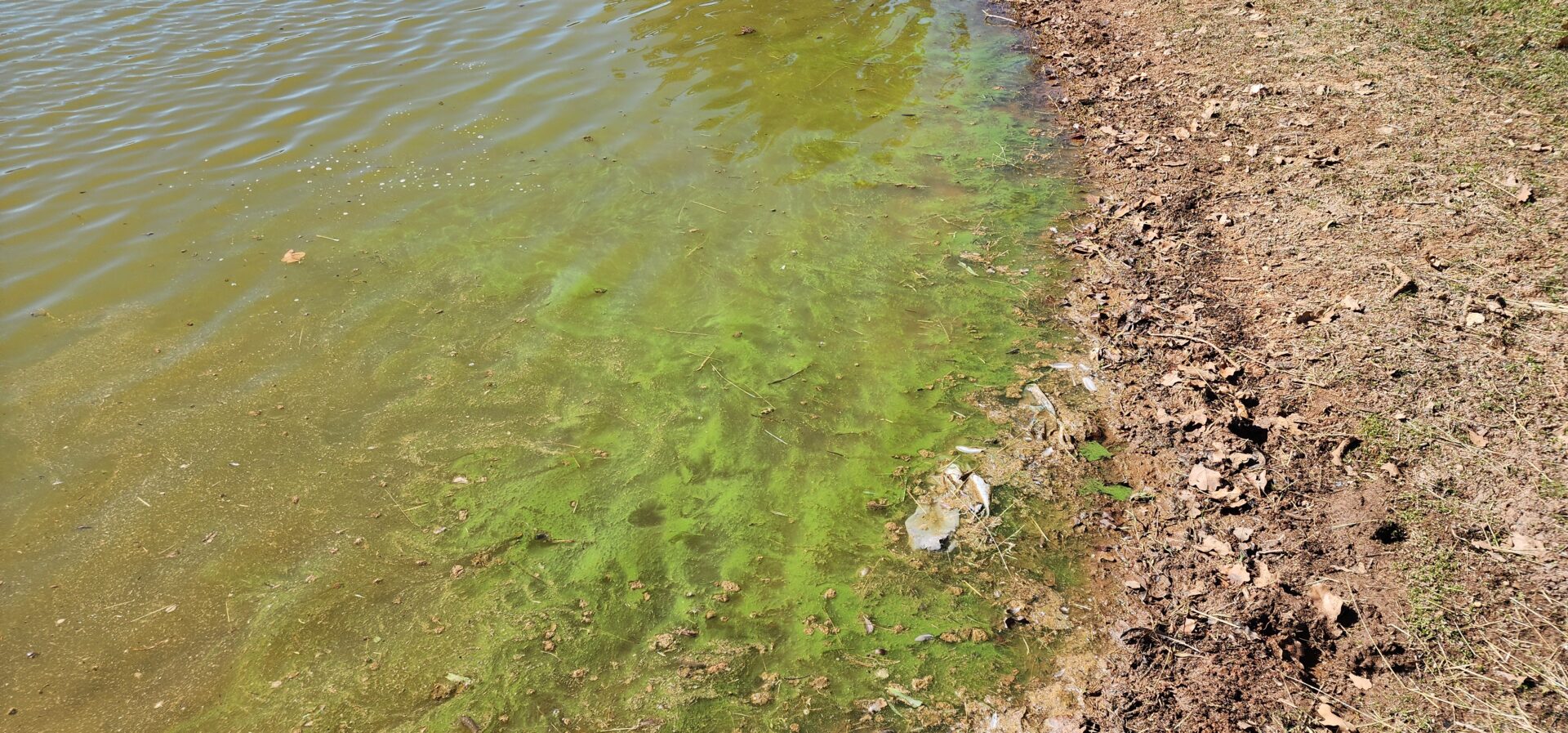
Pond & Lake Fountain Repair / Maintenance
Pond and lake Fountain repair and maintence
Aquatic Vegetation Management
One of the most common complaints from new clients is the amount of aquatic weeds and algae in their ponds or lakes. In most cases, the target for lake vegetation coverage is around 20% or less of the total lake acreage.
The most effective management technique for excessive aquatic vegetation and algae in your pond or lake is the properly timed application of EPA-approved algaecides or herbicides. These aquatic algaecides, or herbicides, need to be precisely applied.
We are compliant with the Clean Water Act, the National Pollutant Discharge Elimination System, and the Texas Commission on Environmental Quality.
Site Evaluation, Site Design, & Lake Construction Consulting
Vollmar Pond and Lake Management can help you evaluate your property or prospective property for ideal pond and lake sites. We evaluate pond and lake sites using engineering calculations, watershed analysis, soil maps, soil borings, soil testing, historical imagery, and most importantly, common sense.
Some questions that need to be answered to properly evaluate a new or old pond or lake site are:
- Size of the watershed
- Average rainfall and evaporation rates
- Suitability of soils to hold water
- Depth to hard pan soil condition, bedrock, sand, gravel, etc. (this can help or limit a site)
- Have field tests been performed at the dam site and/or pool area
- Expected runoff from rainfall
- How is the upstream watershed used (agriculture, range land, urban, etc.)
Once your site has been evaluated and lake construction is on the horizon, it is time to consider lake design. Vollmar Pond and Lake Management provide simple to complex lake design plans. Items commonly addressed in a lake design plan:
- Prevailing wind direction and lake orientation
- Primary fish species desired (lake designs may differ)
- Fishing type preferred by customer
- Fishing locations
- Swim areas
- Dock placement and material
- Where should the deep and shallow water be located (most times dictated by topography)
- What are the qualities of water expected from the watershed?
- Artificial fish structure placement
- Maximize natural fish structure (fallen or flooded trees, natural islands or peninsulas)
Vollmar Pond and Lake Management offers lake construction management. Many of our clients do not live on their property, which makes a lake construction project hard to manage. Let us take care of the construction management. Some items addressed in lake construction management include:
- We can help in the selection of a contractor.
- We know the questions that should be asked.
- Asking the right questions can weed out inexperienced contractors, saving you time and money.
- We hold contractors to proper construction methods
- We provide clients with construction reports with photos and timelines
- Lake construction bid acquisition
Ponds and Lakes Positively Affect Property Value
Fishing and hunting resources top the list of must-haves for recreational property buyers. Properties with strong, reliable ponds and lakes always demand higher prices per acre and retain greater demand than those properties without ponds or lakes.
According to the Natural Resources Conservation Service, by 1980, more than 2.1 million ponds and lakes had been built on private lands in the United States. Ponds have long been sought-after features on any farm or ranch. In April 1935, a federal law was passed to address soil erosion, which was considered a national menace affecting land productivity and value. The 1935 law started the Soil Conservation Service (SCS), which was recently renamed the Natural Resources Conservation Services (NRCS). This law provided technical and monetary aid to landowners to help minimize soil erosion.
Water Quality Testing
Ponds and lakes are used for many purposes, such as fishing, swimming, irrigation, livestock/wildlife watering, and aesthetics. Depending on the main use or combination of uses of your lake or pond, different water quality parameters are of greater importance than others.
Most of our clients use their lakes and ponds for swimming, fishing and aesthetics. Nutrients (phosphorous as phosphates and nitrogen as nitrates), alkalinity, dissolved oxygen, pH, bacteria, and turbidity are some of the main water quality parameters that need monitoring in ponds and lakes used for swimming, fishing, and aesthetics.
Water Quality Management
- Murky/turbid water, either organic or inorganic, is detrimental to your trophy fish population; prolonged murkiness can reduce a fish's foraging ability because their sight is restricted.
- Prolonged murkiness can also give undesirable fish, like gar and common carp, an advantage over your more sensitive prized fish or trophy bass.
Murky/turbid water limits swimming opportunities in many ways, such as:
- The pond or lake suffers aesthetically, many people, especially children, are hesitant to use the water for swimming.
- If the water is turbid or murky due to plankton blooms (pea soup water), it may be advised not to swim in the water.
- Smell may also be a problem in lakes or ponds with murky/turbid water.
Whether it is organic or inorganic murkiness or turbidity, we have the products, equipment and the expertise to solve your problem.
Fish Stocking Your Pond or Lake
We source our fish from many reputable fish farmers in Texas, Arkansas, Oklahoma and Missouri. Since we are not tied to one fish farm, we can increase general fish availability, fish size availability, and fish species availability.
What questions should be asked?
- What are your fishery goals for your pond or lake?
- What is the surface acreage of the pond or lake?
- What is the water clarity? Is clarity low due to algae or clay?
- What are the characteristics and uses of the upstream watershed?
- What are your goals for stocking fish in your pond or lake?
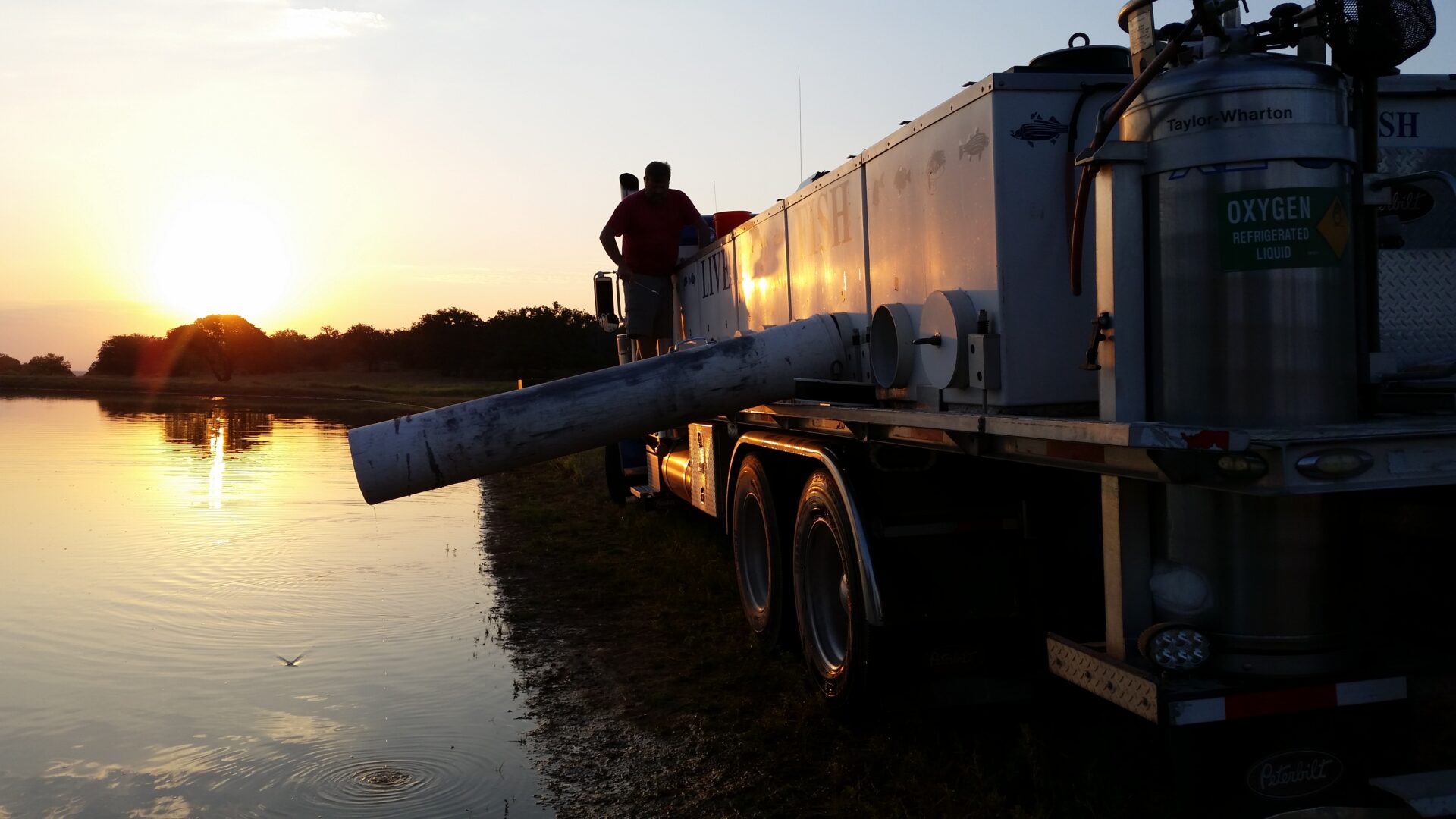
Types of Fish We Stock
Click below to jump to a fish
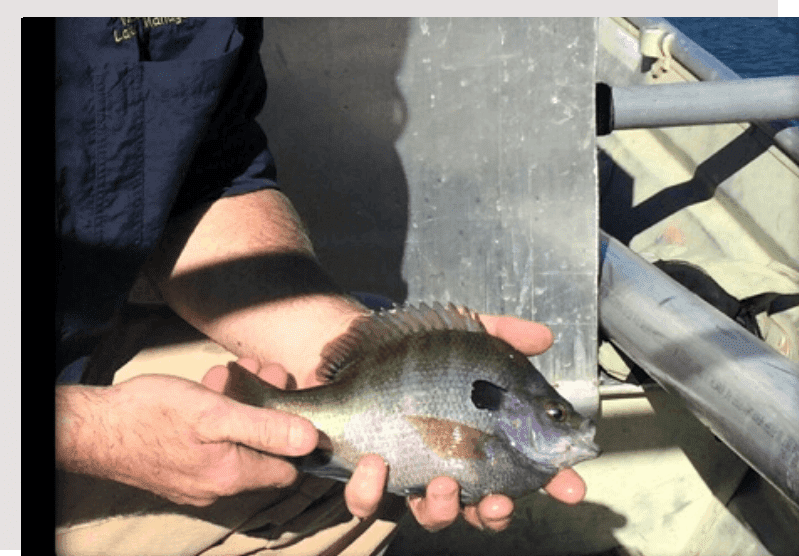
Bluegill
The classic prey fish of any trophy bass lake. Bluegill can also be your main target fish for your lake; there is nothing like hooking a pound plus Bluegill on light tackle or a fly rod. Bluegill spawn multiple times when water temperatures are between 67-80° F. They are the perfect prey fish in Largemouth Bass lakes because they spawn prolifically. In most lakes, their average size is 6-10 inches, which makes them readily available to larger bass. They also have smaller mouths and do not compete with bass as heavily as others fish like Green Sunfish and Crappie. Adults mainly feed on insects, which makes them a perfect fish for connecting lower food web nutrients with your prized bass. The Texas State Record Bluegill is just over 2 Lbs.
Redear (Shell Cracker)
Shell Crackers are another prey fish stocked in bass lakes. They get the name Shell Cracker because they feed mainly on aquatic snails and other mollusks, which carry the Yellow Grub Trematode, which is a parasite that can be detrimental to your fish. Their preference for snails also helps connect lower food web nutrients with top end bass, similar to the connection that Bluegill provide to bass by their preference for insects. During their life, Redear hardly compete with bass. Redear grow larger than Bluegill with an average size of 8-11 inches. Their larger size fills an area that Bluegill cannot provide. The Texas state record is just under 3 Lbs. Redear make great table fare. They spawn 1-2 times a year between late spring and early summer. They rarely live more than 6 years.
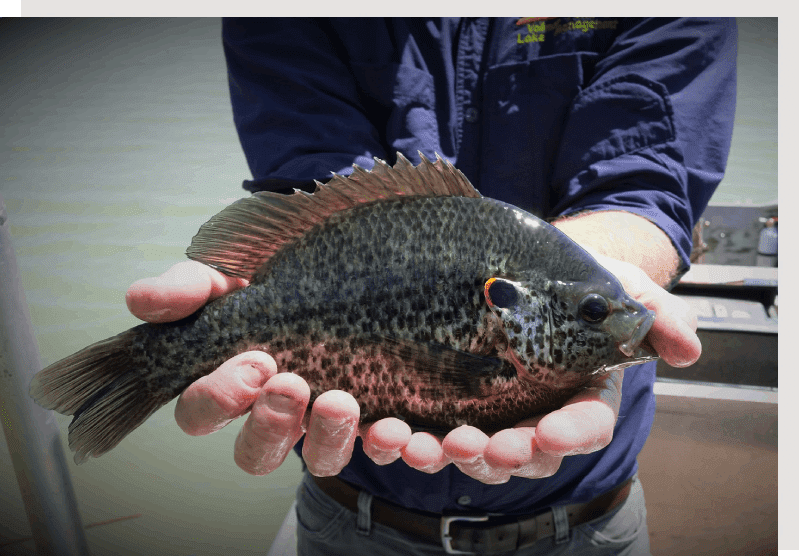
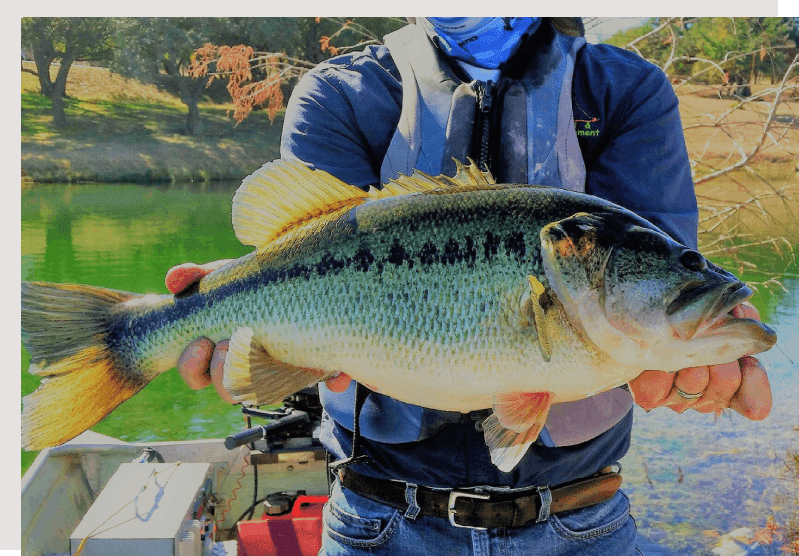
Largemouth Bass
The most popular predator fish in the South, they can reach trophy size in small ponds and lakes with proper management. These fish tend to stunt at a length of 10-14” without proper management. Largemouth Bass spawn when temperatures reach 60-65° F. These fish are extreme predators, by the time they are 2-4” long they are already mainly consuming fish. The Texas state record is 18 Lbs. We can stock all strains of Largemouth Bass, which include northern/native Largemouth Bass, Florida Largemouth Bass, or Hybrid Largemouth Bass. There are advantages and disadvantages to each of these Largemouth Bass strains, call us to discuss your options.
Black Crappie
We get many requests for Crappie stocking. Black Crappie are a highly prized fish to many anglers, especially with light tackle. Crappie are known for their sweet, flaky white flesh. With all their great attributes, we only recommend stocking these fish in larger ponds over 5 acres. The reason we recommend only stocking Crappie in larger ponds is because they are prolific spawners and tend to overpopulate leading the population to a stunted Crappie condition, all fish under 5”. They also have large mouths and will compete directly with bass in many of their life stages. If Largemouth Bass are your main target stay clear of Black Crappie. Odds of successful Black Crappie stocking increase as the water body increases in size and habitat complexity. If you have an existing population of Black Crappie, management for Bass can be successful with active fishery management practices. To help concentrate Black Crappie and have higher success in crappie fishing add a few brush or timber piles. These habitat features tend to be preferred by crappie. Black Crappie live less then 7 years and spawn multiple times when water reaches 60° F. The Texas state record for Black Crappie is just less than 4 Lbs.
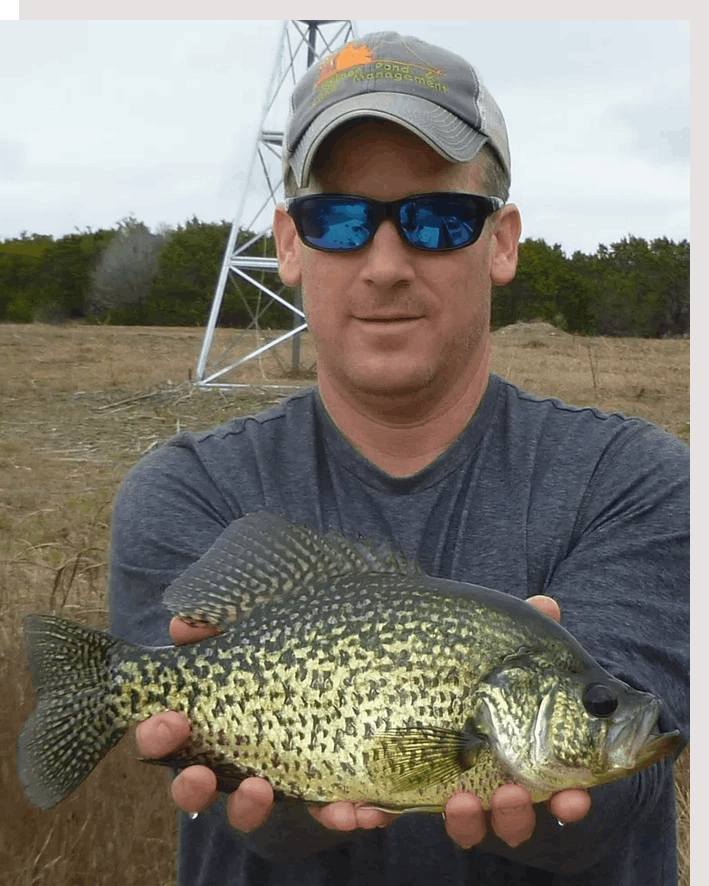
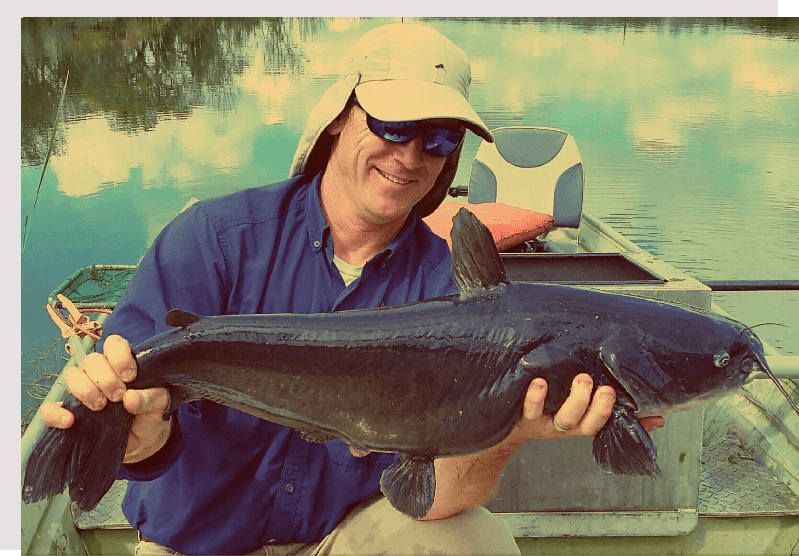
Channel Catfish
Channel Catfish are probably one of the most popular fish with lake owners that like to fill their frying pans with their catch. We recommend this catfish if you desire catfish in your bass lake because they provide lots of fun and attain a good size, but they do not attain the large size of the Blue Catfish. The Texas state record Channel Catfish is 36 Lbs, where the Texas state record Blue Catfish is 121 Lbs.. Channel Catfish generally live 6-7 years. Channel Catfish spawn when temperatures reach around 80° F. Generally Channel Catfish are stocked under the assumption that they will be a “Put-and-Take” fishery, meaning - you put in 100 Channel Catfish and catch 100 Channel Catfish; you then need to restock. Channel Catfish generally have low offspring survival in lakes with Largemouth Bass. Low offspring survival can also be attributed to lack of proper spawning habitat in small water bodies. If you do not want spawning, try to minimize cavity-forming habitat like hollow logs, coarse brush piles, tires, or undercut old creek banks.
Hybrid Striped Bass
Hybrid Striped Bass are a cross between White Bass and Striped Bass and are considered true Bass and are not related to Largemouth Bass. Hybrid Striped Bass are sometimes called Wipers or Palmetto Bass. These fish are usually stocked as a supplement to an existing Largemouth Bass/Bluegill lake. If stocked heavily they will compete greatly with your Largemouth Bass, however they are known to come to supplemental feed well and grow rather quickly on it. So if they are stocked with your Largemouth Bass supplemental feeding is a must to help reduce their need to compete with your Largemouth Bass for food. Hybrid Striped Bass can also be stocked alone in smaller ponds if a supplemental feeding program is in place. Hybrid Striped Bass are functionally sterile and are considered a “put and take” fishery, meaning- you put in 100 Hybrid Striped Bass and catch 100 Hybrid Striped Bass; you then need to restock. The Texas state record is 19 Lbs., however 5-7 Lbs. is common. Hybrid Striped Bass live around 5-6 years. Hybrid Striped Bass provide great cool weather fishing when your other fish become difficult to catch due to cooler temperatures.
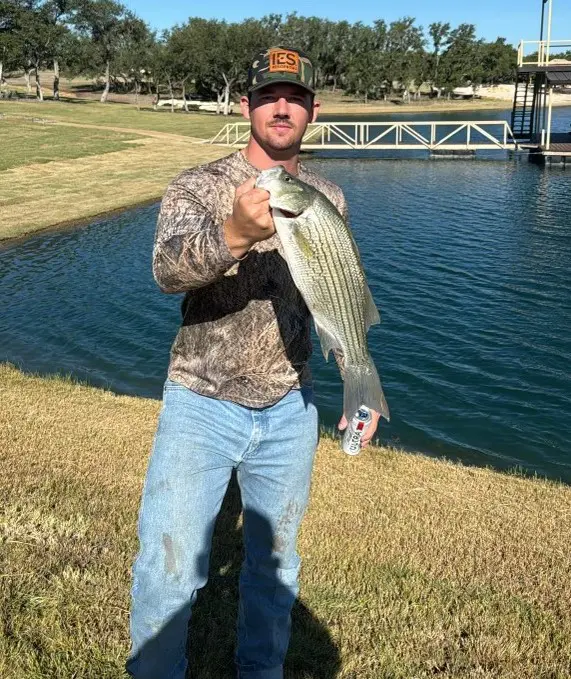
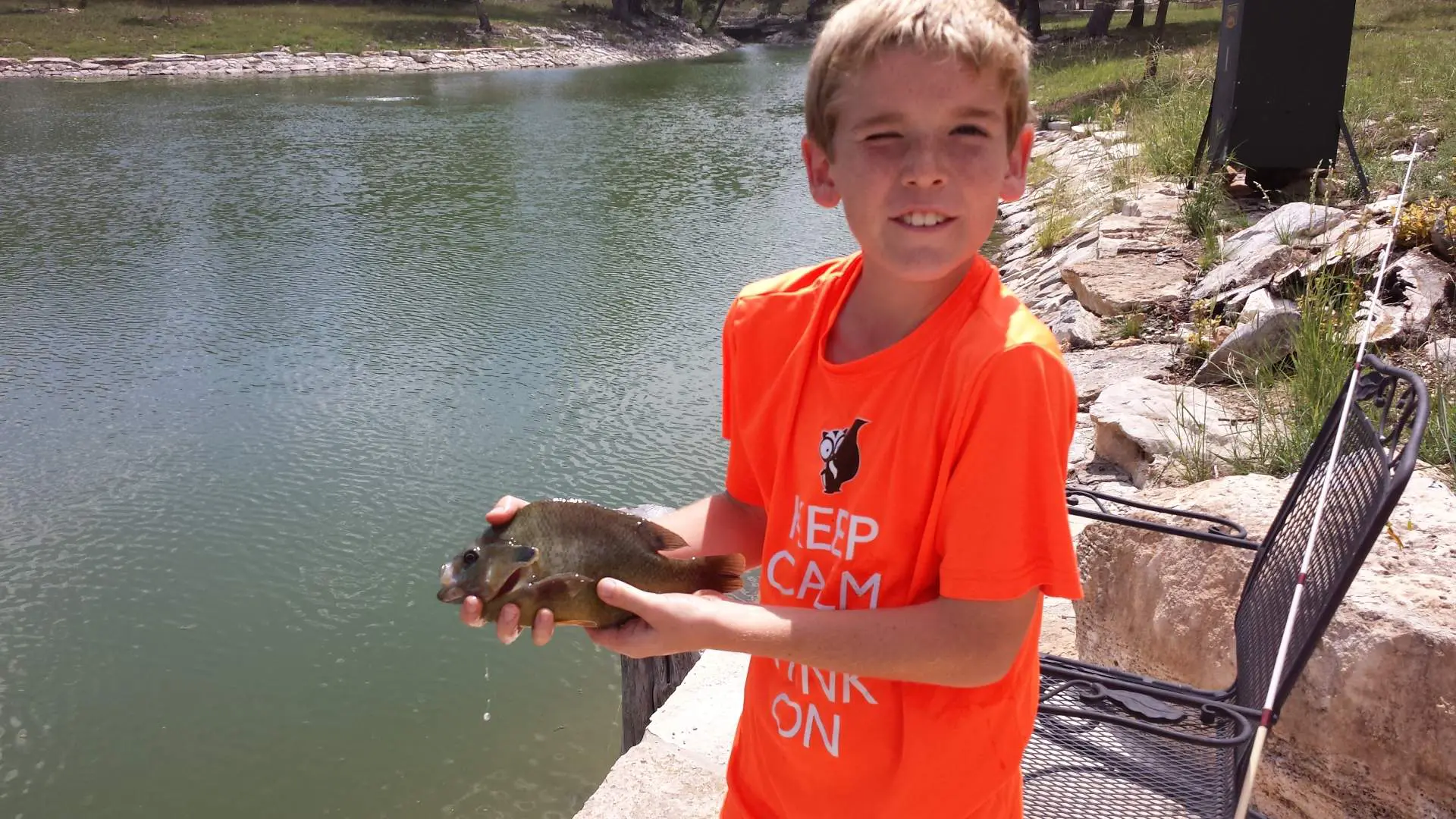
Hybrid Bluegill
Hybrid Bluegill are most commonly a cross between a Bluegill and a Green Sunfish. This hybrid cross perfectly illustrates a natural phenomenon called “hybrid vigor”. Hybrid vigor in Hybrid Bluegill is shown in their accelerated growth rates and the fight they give on light fishing tackle. Hybrid Bluegill are not sterile, however, their reproduction is limited and offspring sex ratios tend to lean toward males, with few females, which also reduces reproduction. Hybrid Bluegill take supplemental feed readily and grow well on it. Hybrid Bluegill are a good option for smaller ponds with feeders.
Golden Shiner (Minnow)
A prey fish utilized by almost all other fish in your lake.
This fish is hardy and prolific. Golden Shiners spawn when temperatures reach 68-80° F.
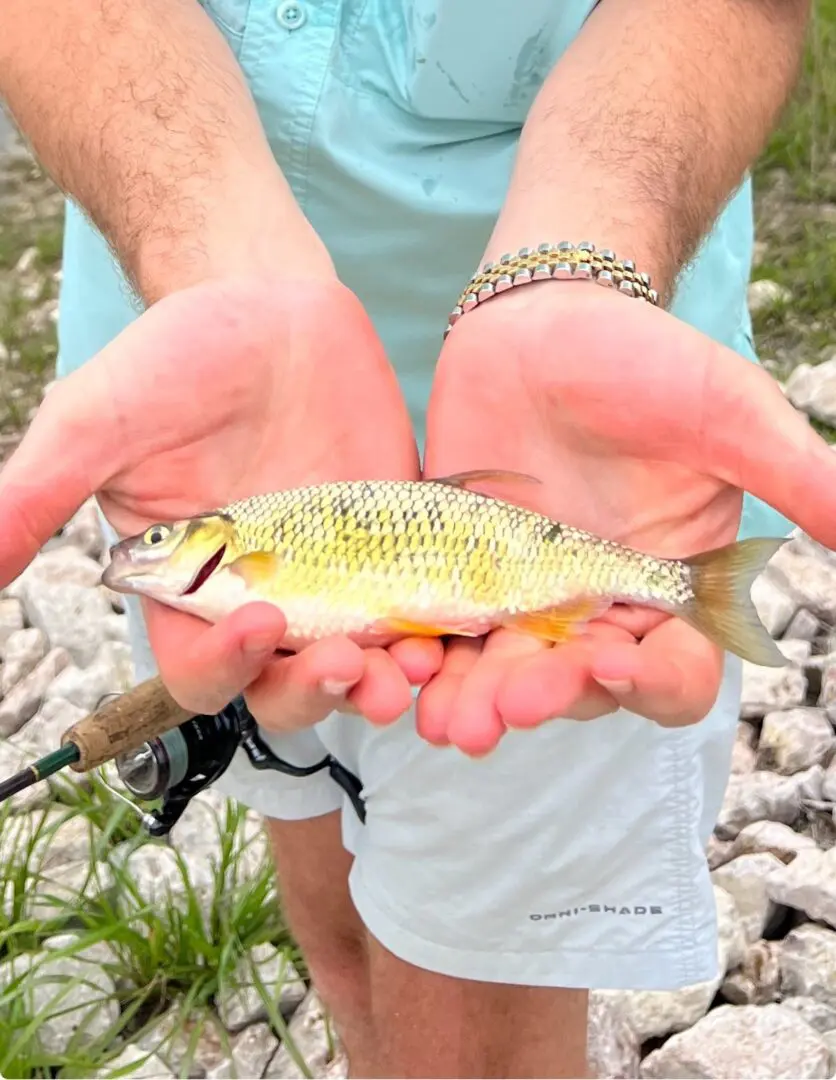
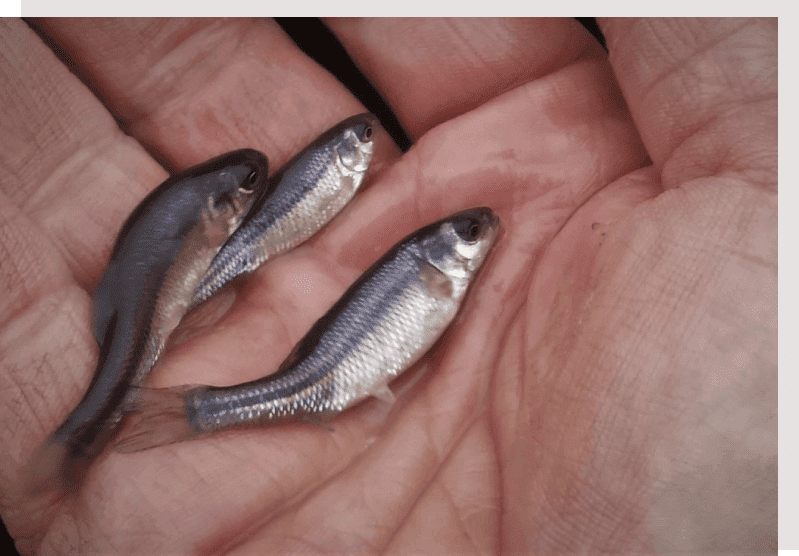
Fathead Minnow
A prey fish utilized by almost all other fish in your lake. This fish is hardy and prolific. Fathead Minnows spawn when temperatures reach 60–65 F.
Specialty Fish We Stock
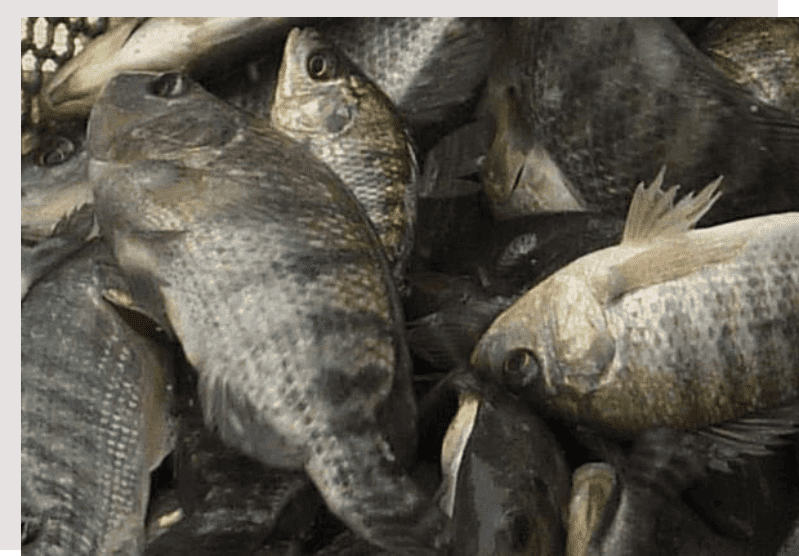
Tilapia
Tilapia Stocking - Since Tilapia are so prolific they can take foraging pressure off of your Bluegill and Redear population. If stocked at higher rates, Tilapia will also control filamentous algae. Tilapia will not survive water temperatures lower than 52º F, this means Tilapia survive into December. This does not mean your stocked Tilapia will all die at once; the Tilapia will become lethargic into winter and become easier prey for your bass. Rarely will you see large numbers of dead Tilapia.
- Many Biblical scholars consider Tilapia to be “St. Peter's Fish” and also the fish Jesus used to feed the multitudes.
- Tilapia are one of the world's most produced fish in the aquaculture industry.
- Most species of Tilapia are mouth brooders.
- Your prized bass will have almost unlimited forage! We consider Tilapia to be a “FORAGE PRODUCTION MACHINE”
- High reproduction rates - fish spawn every 3–4 weeks.
- Control of filamentous algae-Tilapia will eat large amounts of filamentous algae.
- Tilapia can grow to 1-2 lb by the end of the season and are great table fare.
Rainbow Trout
You can stock Rainbow Trout for winter fishing recreation! We start stocking Rainbow Trout for our customers in early December. The trout must be fed supplemental feed by hand or by use of an automatic fish feeder. Trout provide a great fishery through the long, cold winter. The fish are excellent table fare. The trout should be caught by mid April because the spring water temperature rise will cause the demise of the remaining fish.
A Little History of Rainbow Trout in Texas
In the early 1930’s Judge JC Hunter stocked Rainbow Trout in McKittrick Creek in the Guadalupe Mountains, were they still exist from this original stocking.
In 1966 Rainbow Trout were stocked for public benefit in the tail-water downstream of Canyon Dam. Texas Parks and Wildlife stocked 286,799 individual Rainbow Trout in over 123 sites throughout the state in the 2009-2010 winters.
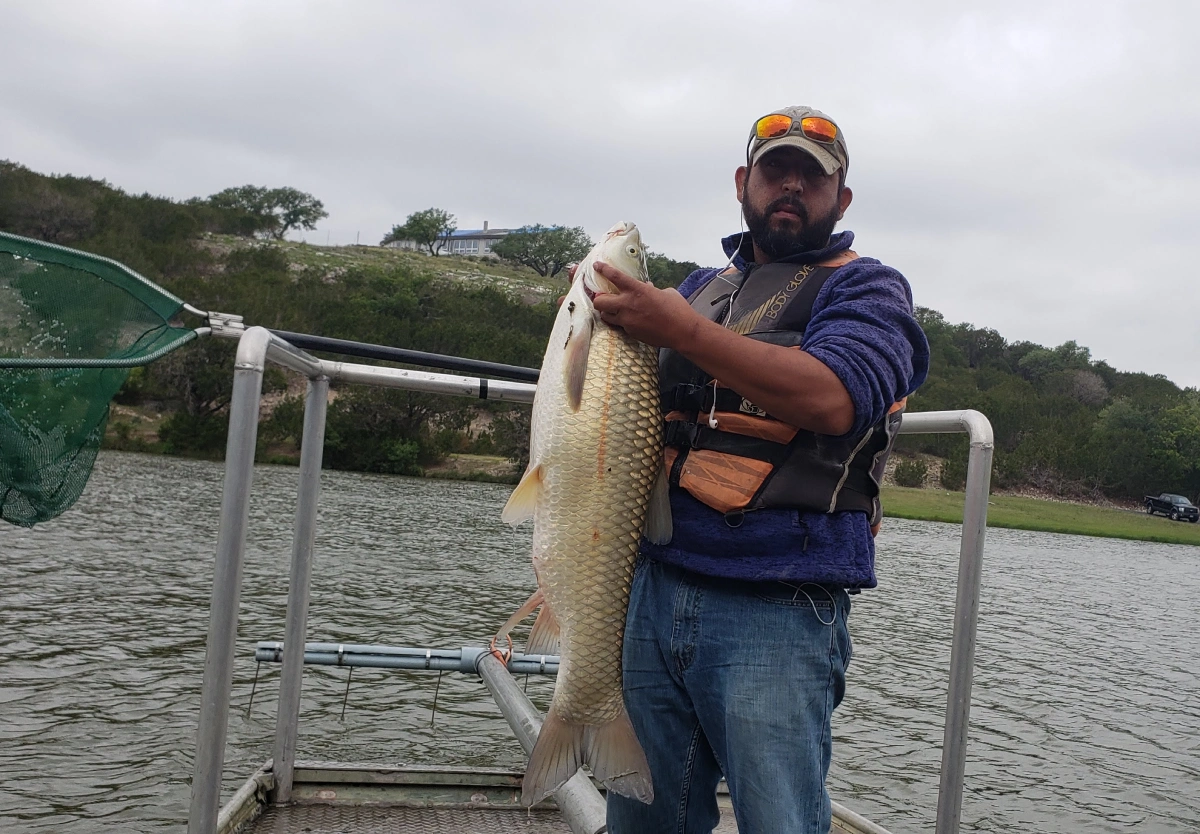
Triploid Grass Carp
Importance of Habitat Variation
The fish habitat contained within your pond or lake is crucial to the production of quality fish. Fish prefer different types of habitats throughout their different life stages. Having a variety of fish habitats is crucial to producing a quality fishery. We can add rock riprap, gravel, hardwood piles, evergreen piles, and other types of structures.
Fishery Surveys / Assess Your Fish Population
We have all the specialized equipment needed to assess your fish population.Electrofishing surveys are necessary before any active fishery management plan is enacted. We use techniques such as electrofishing (sometimes called lake shocking, fish shocking, or a shock survey), shoreline seining, and gill netting to assess your fishery.
Once the fish are collected, we weigh them to the nearest 1/100th pound and measure them to the nearest 1/8th inch. Fish condition (health) provides the insight necessary to determine the effectiveness of your current fishery management plan and practices.
A fishery survey will provide many fishery parameters, like:
- Species present
- Length and weight
- Relative weight (Wr) – Wr shows the condition of your fish compared to healthy fish.
- Proportional Stocking Density (PSD) of game species:
- Fish Density (CPUE)
Pond & Lake Restoration
May Be the Best Solution
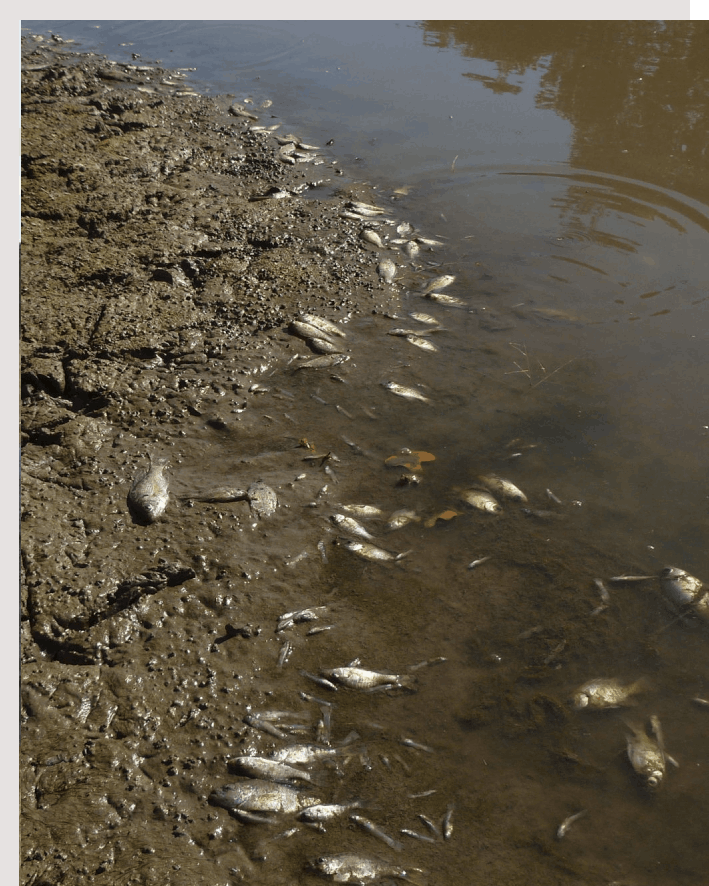
Complete pond or lake restorations completely eradicate all existing fish in a pond or lake, which gives the lake owner and manager a clean slate to start from.
Complete pond or lake restorations are usually called for when the pond or lake has a very marginal population of fish, usually exhibiting:
- Largemouth Bass with a severely disjointed size structure (maybe missing entire year classes).
- Extremely malnourished fish
- Large populations of rough fish, sometimes the only answer to the problem of rough fish populations like common carp or bullheads.
We use EPA-labeled Rotenone products to perform these fish eradication. We are certified by the Texas Agriculture Department to perform Rotenone applications.
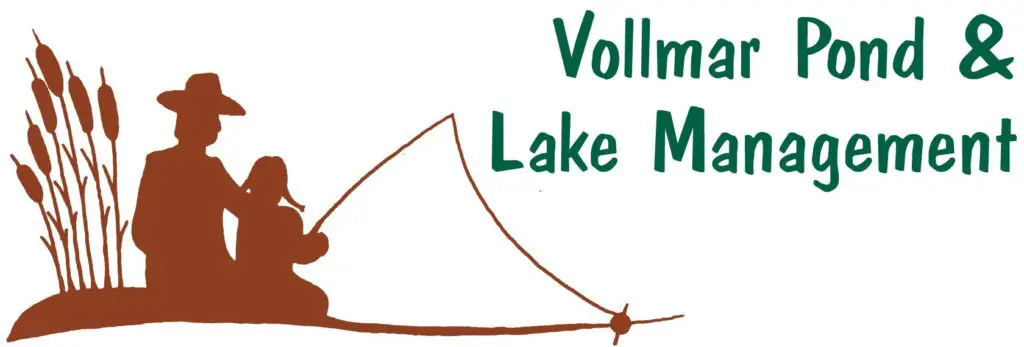
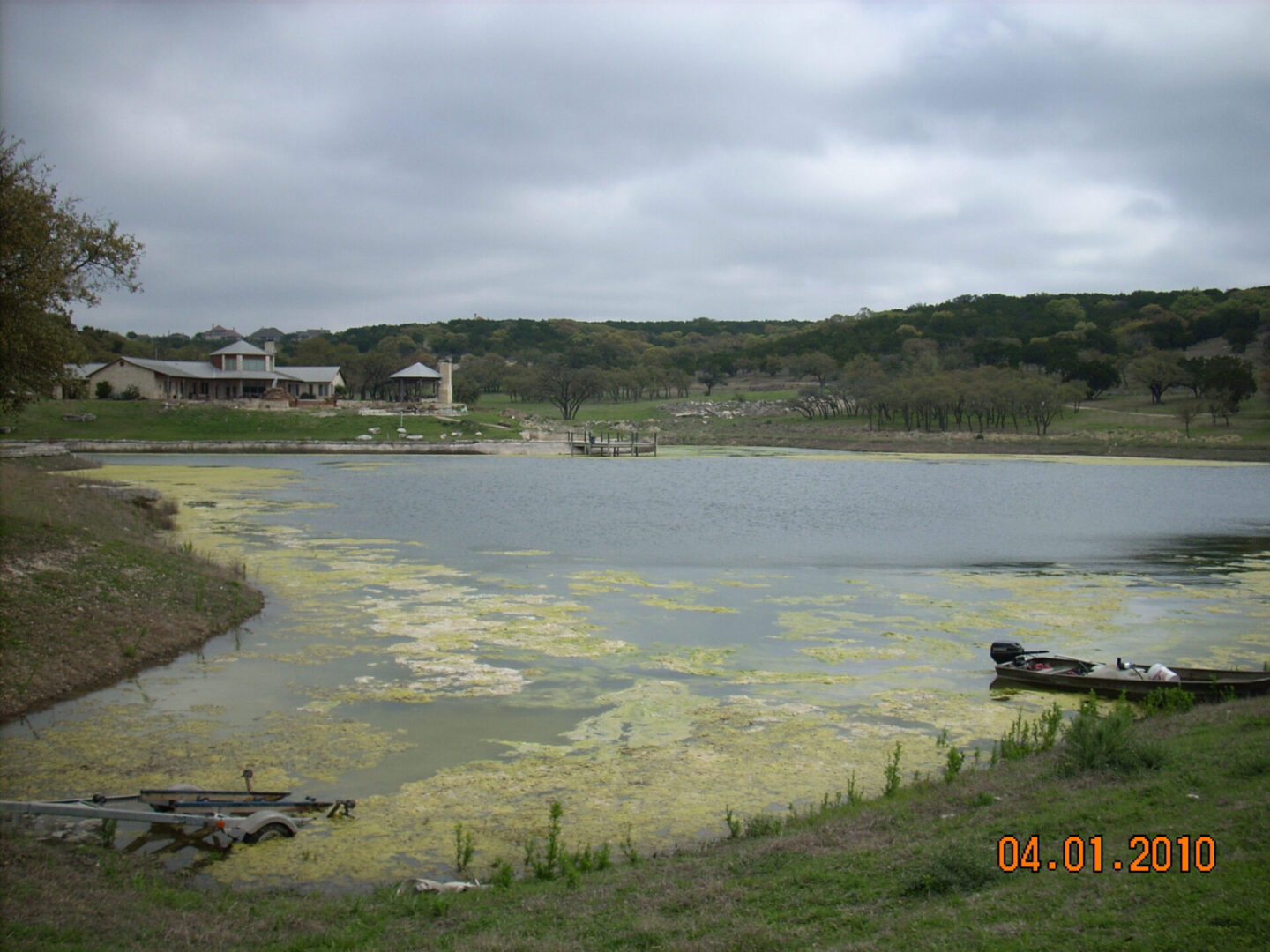
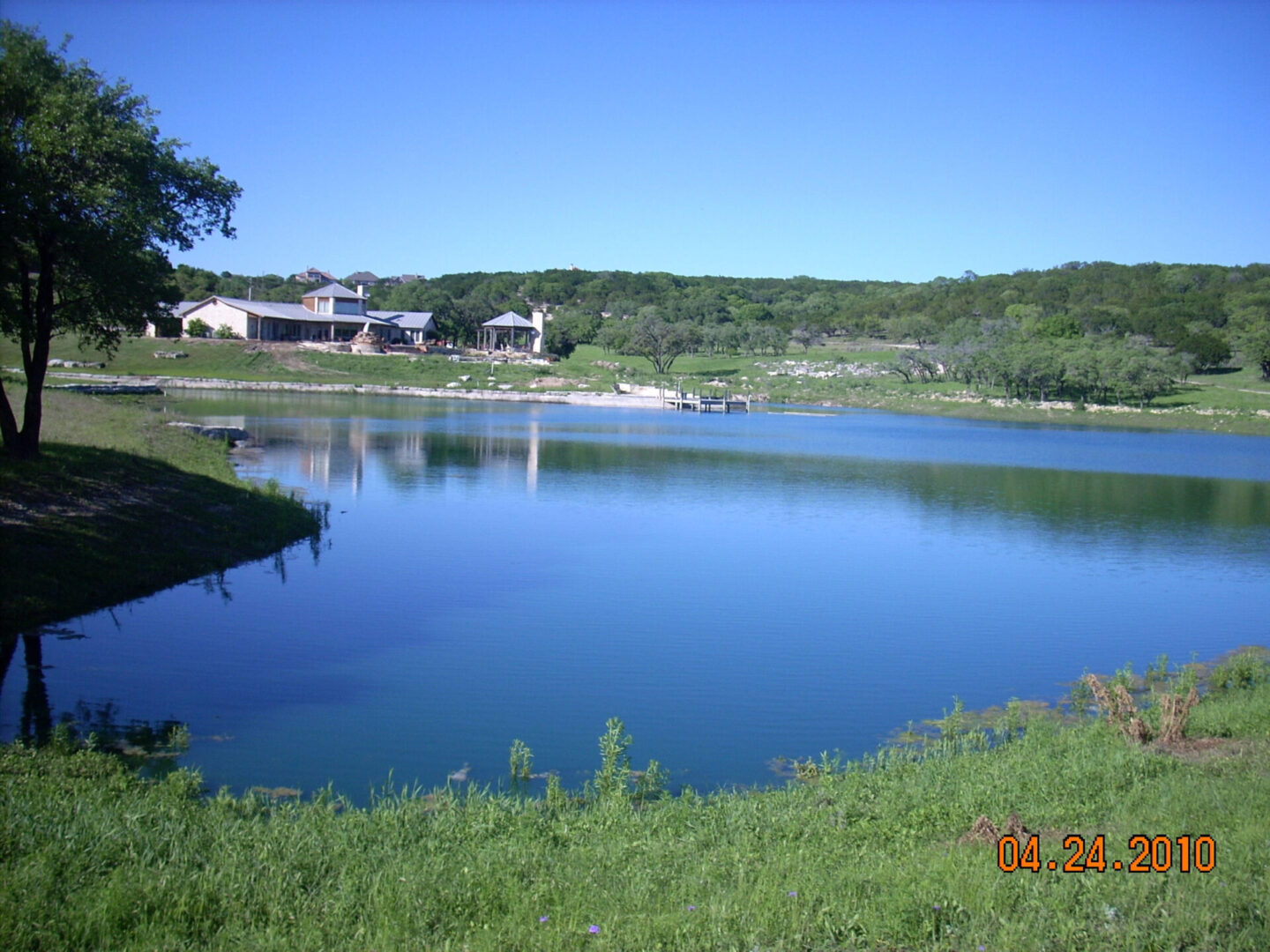

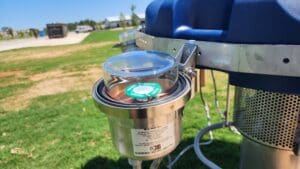
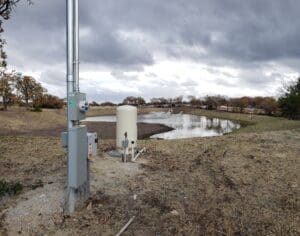
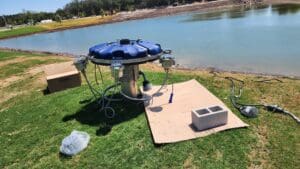
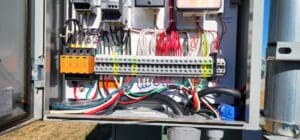
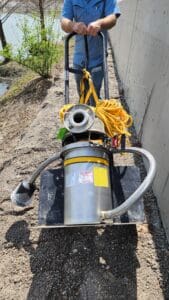
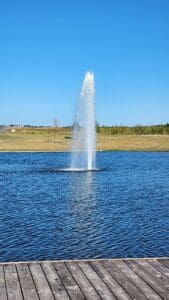
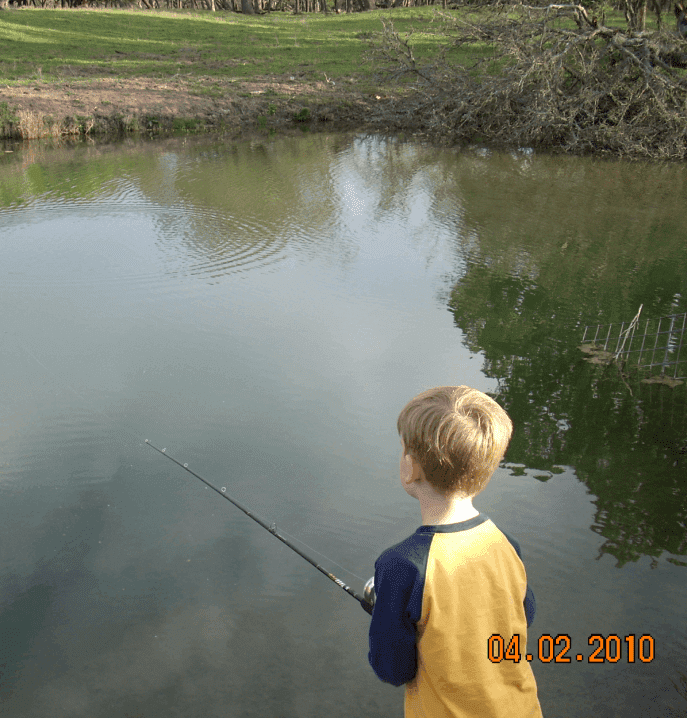
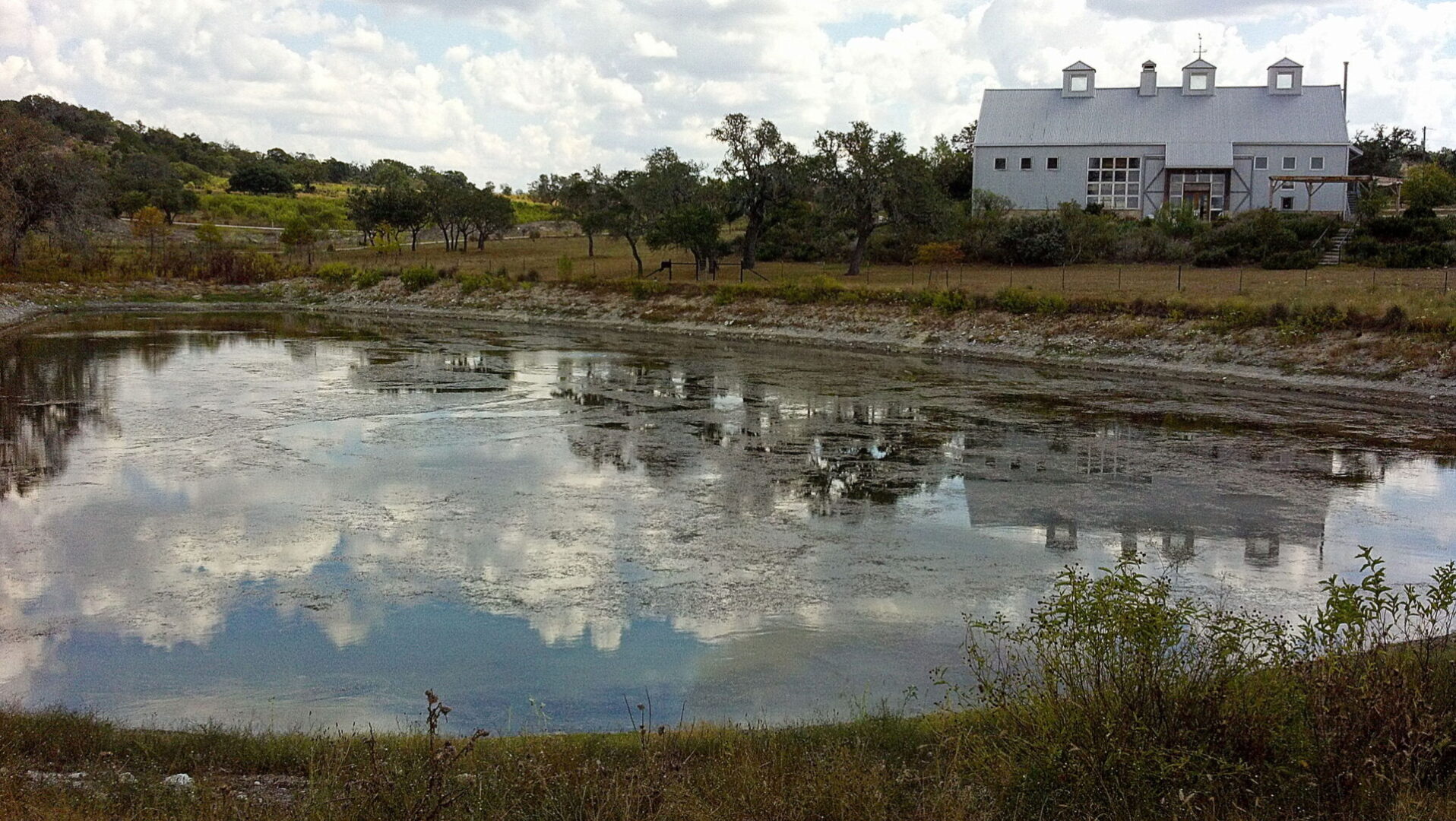
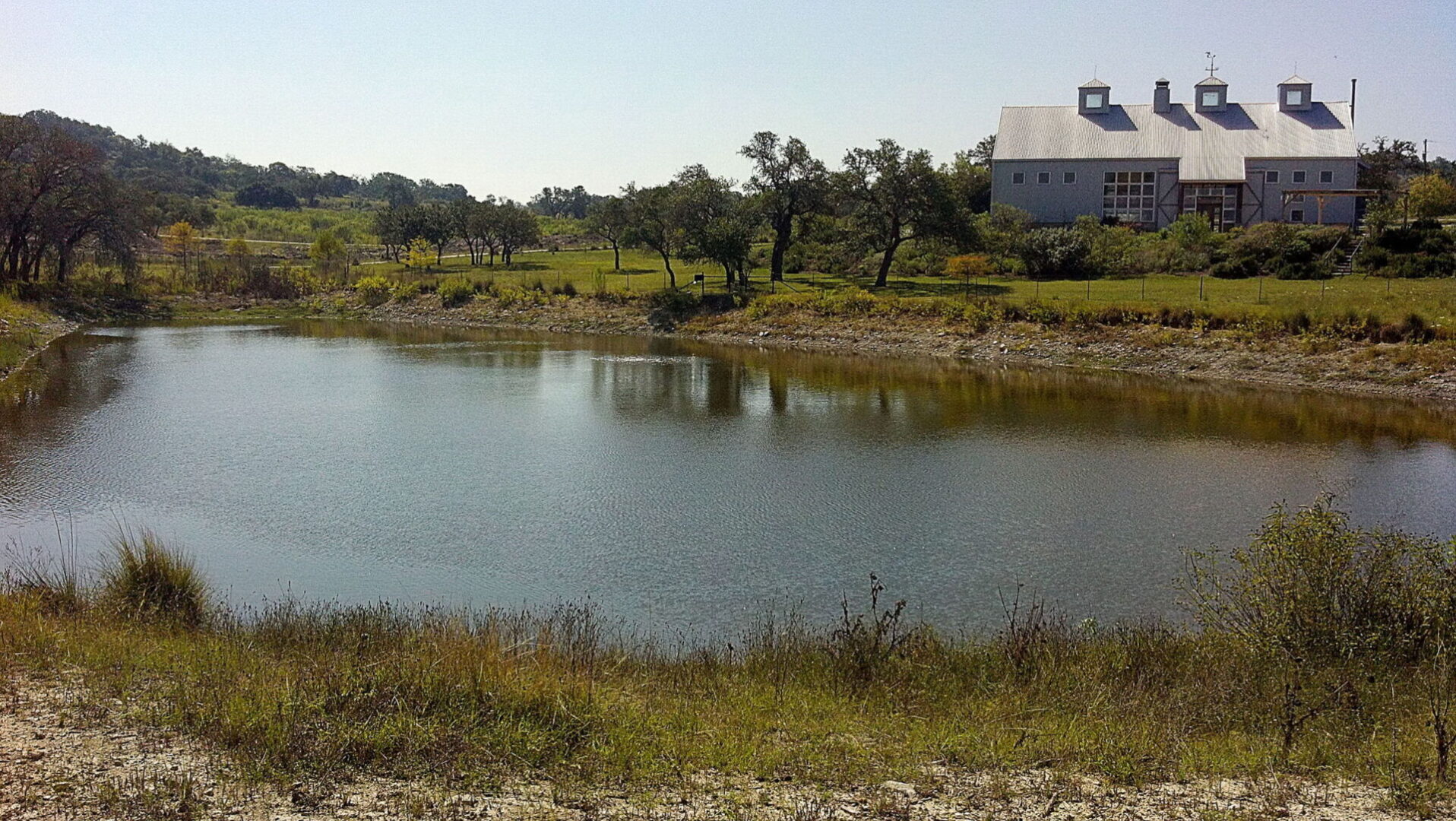
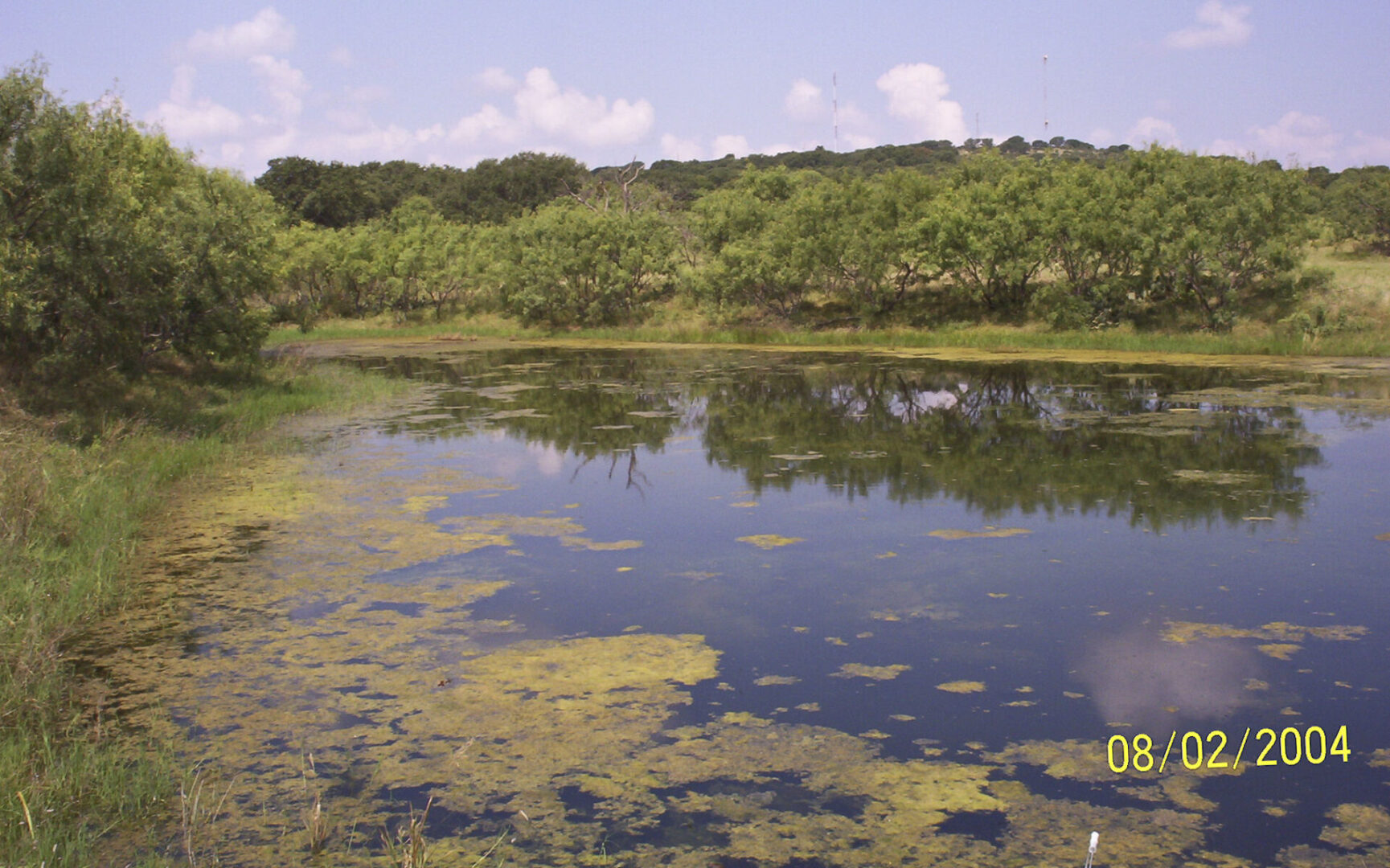
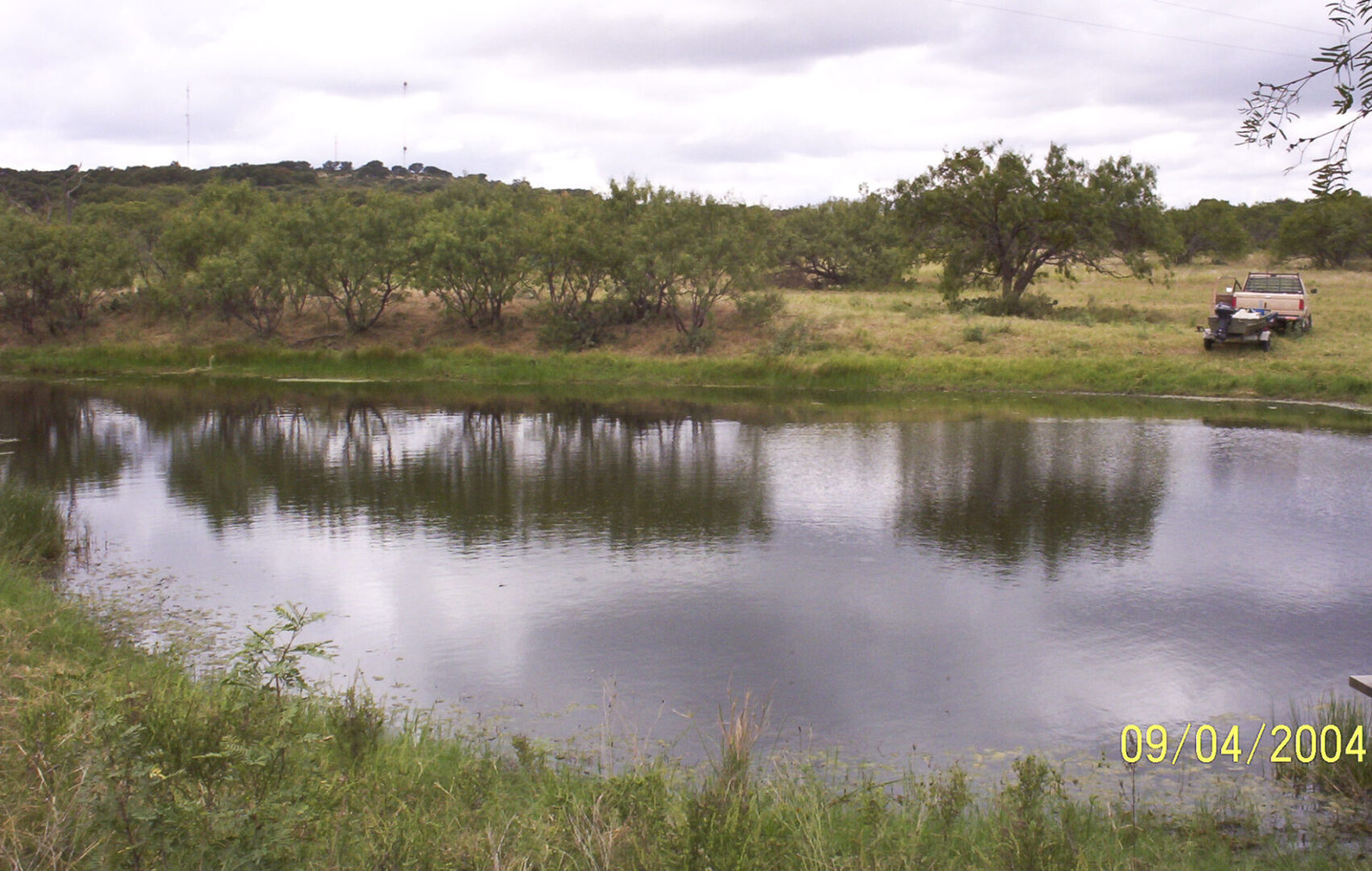
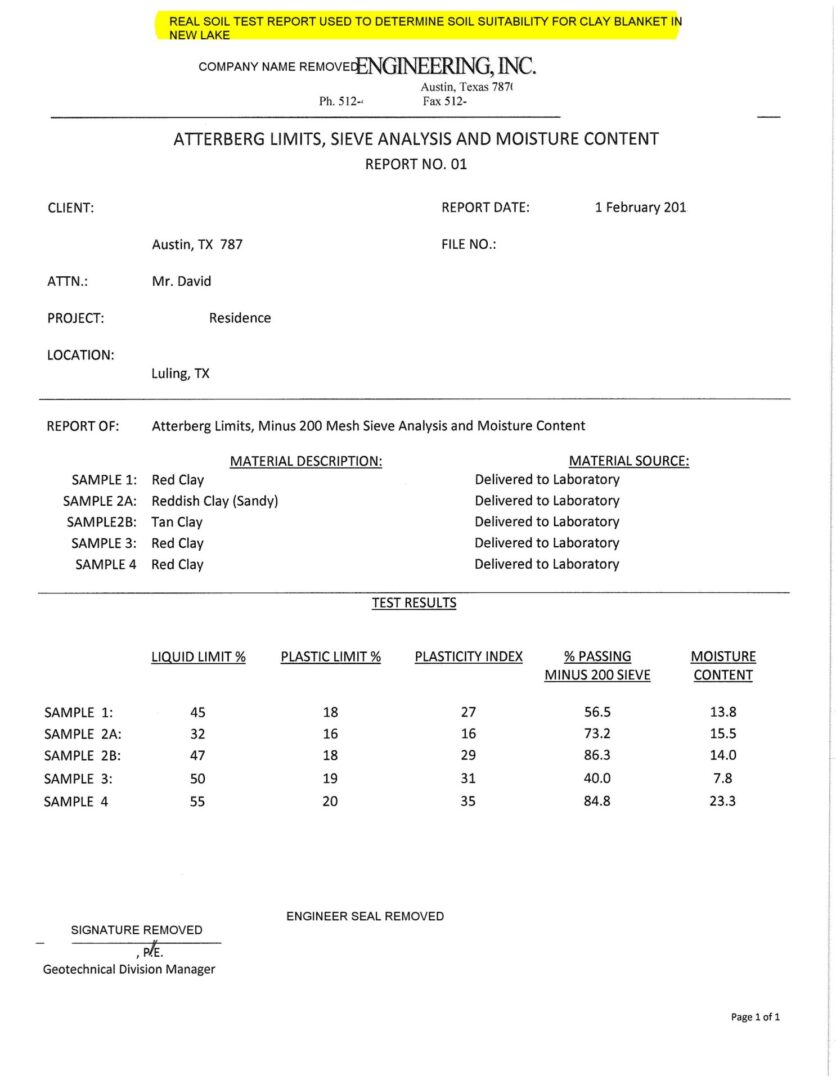
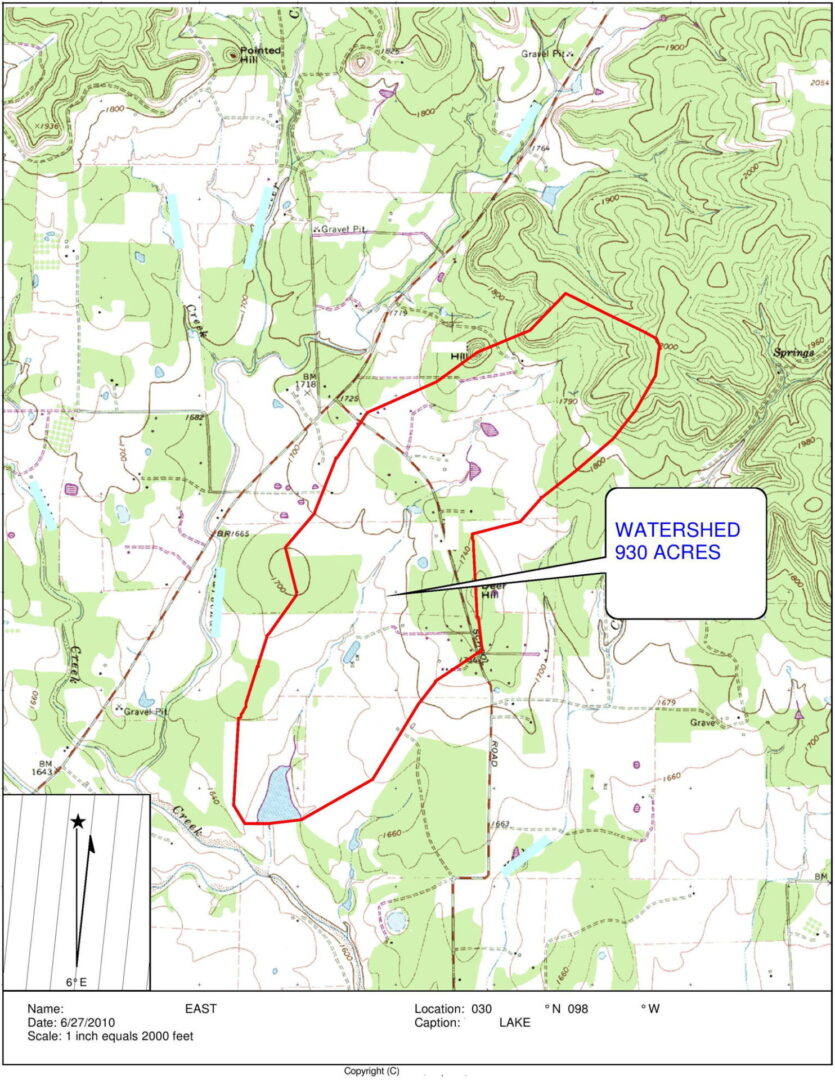
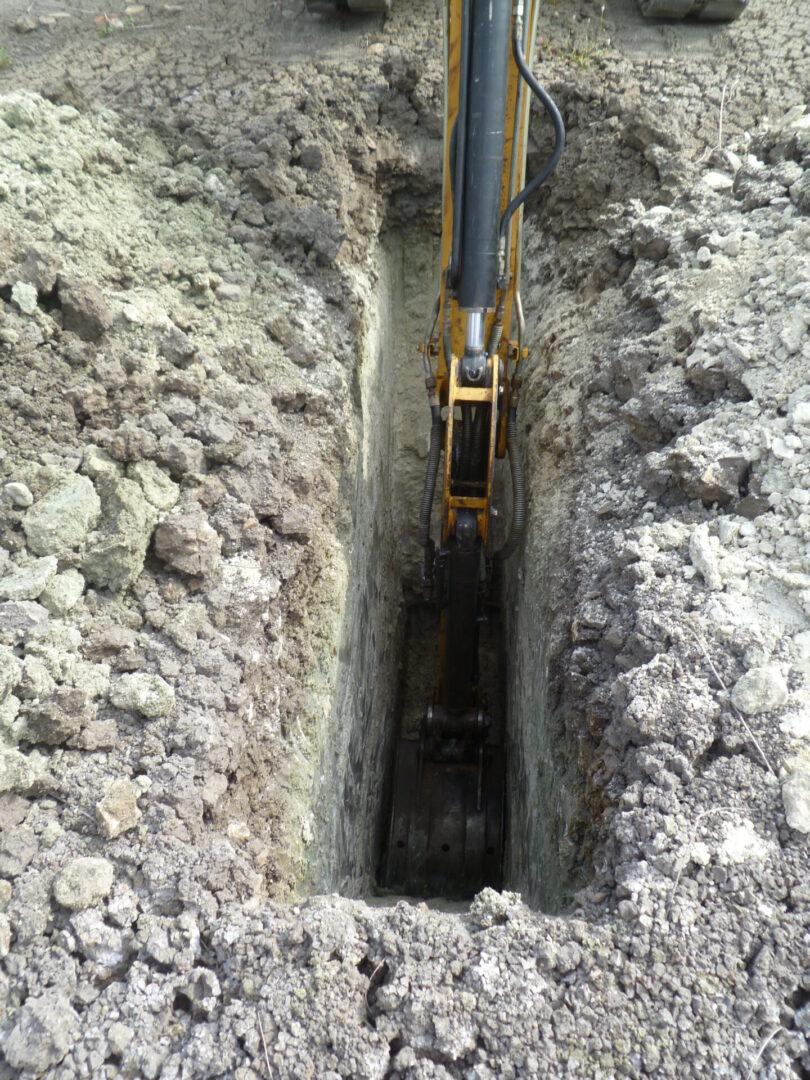
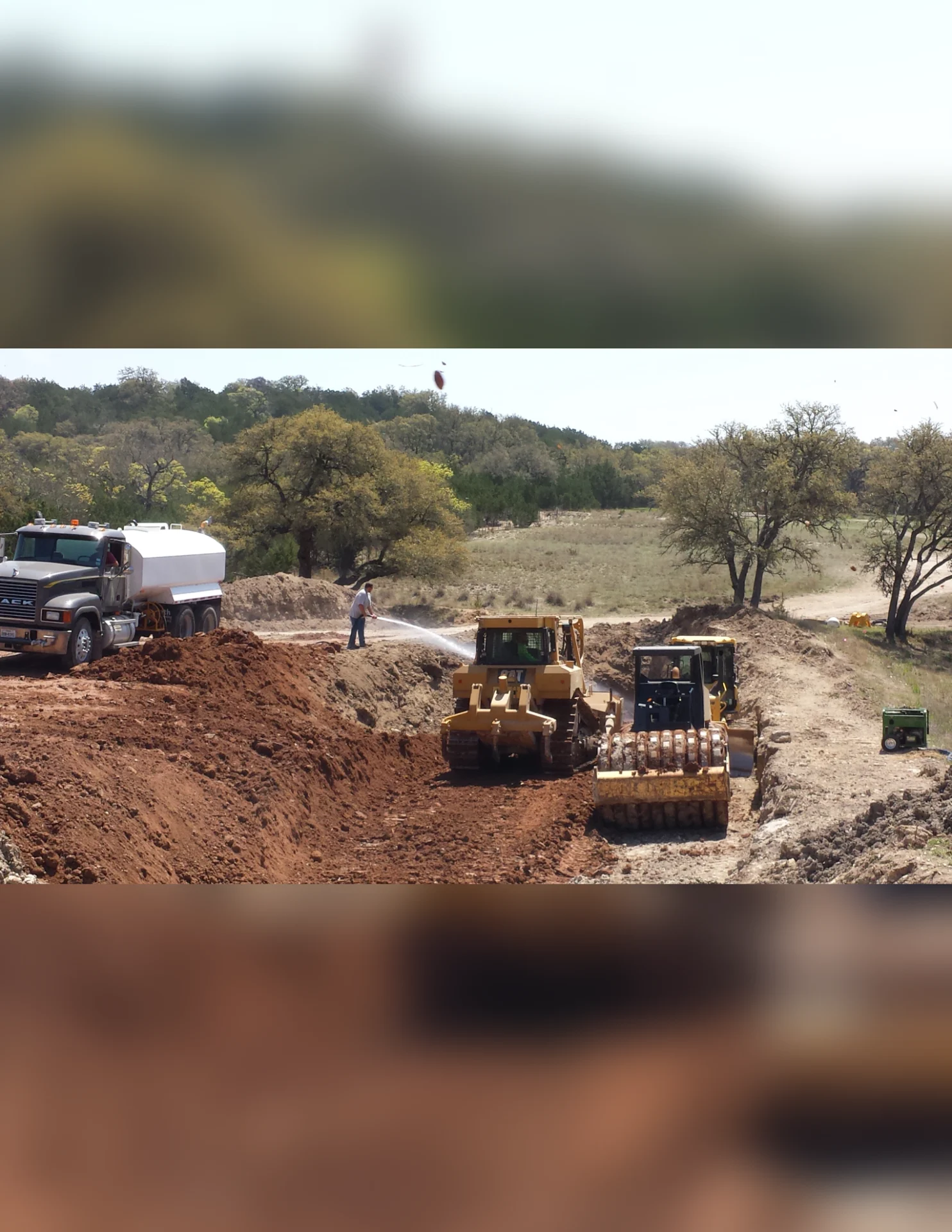
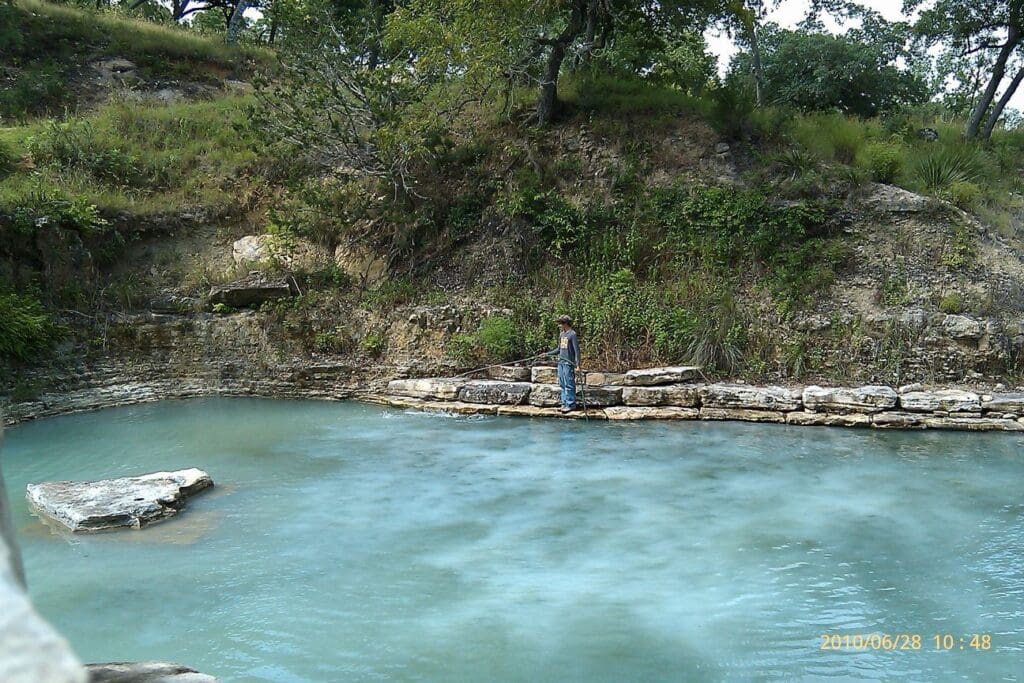
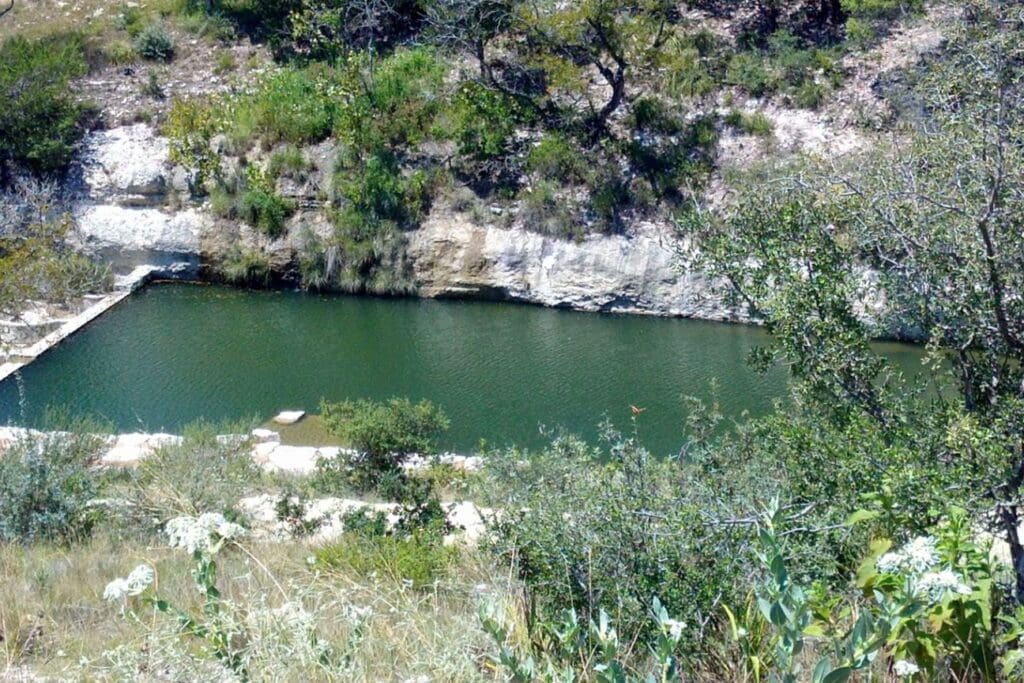
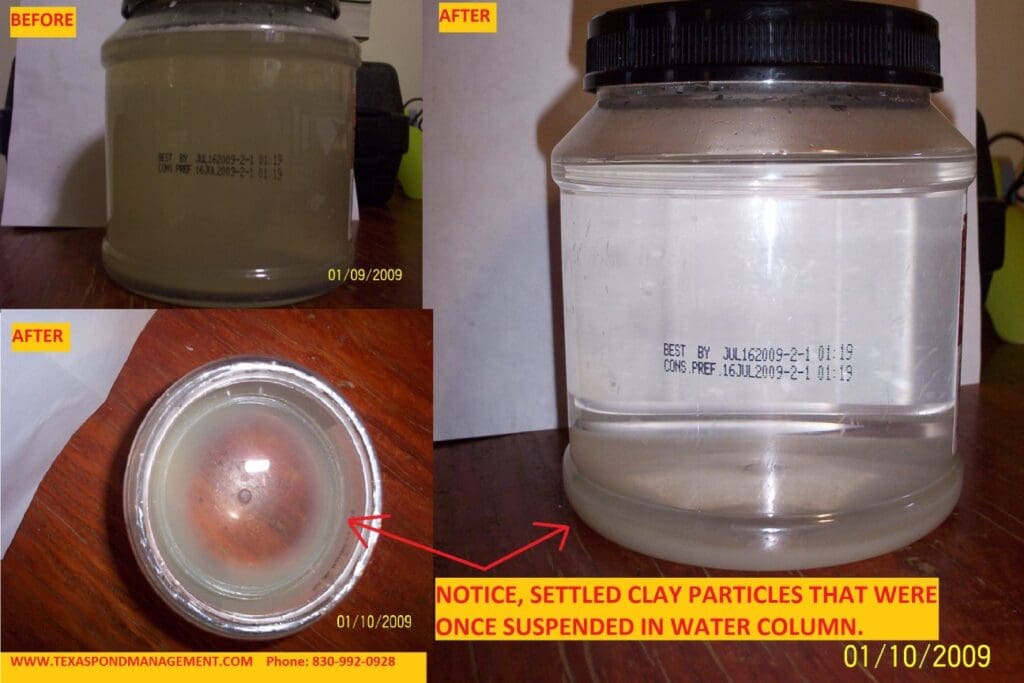
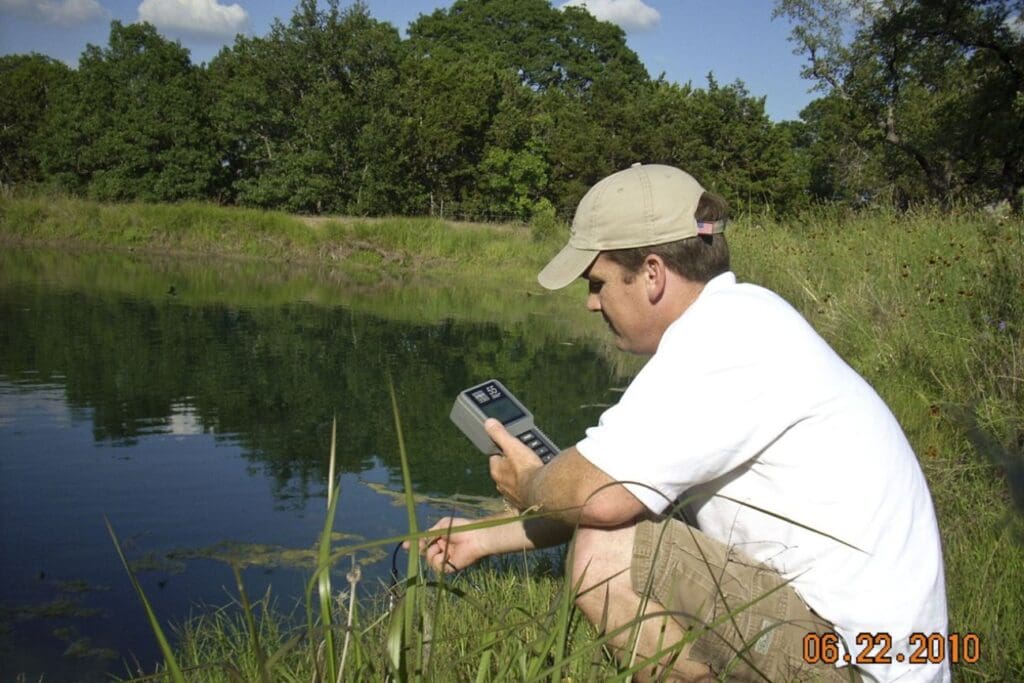


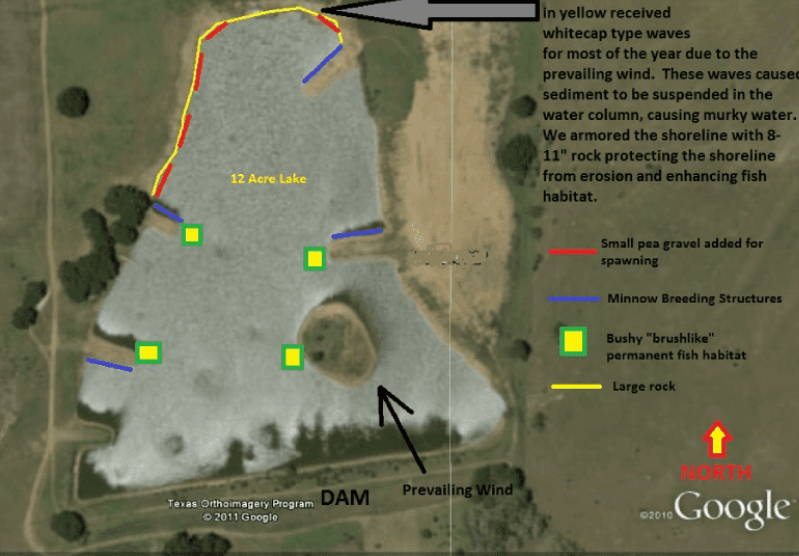
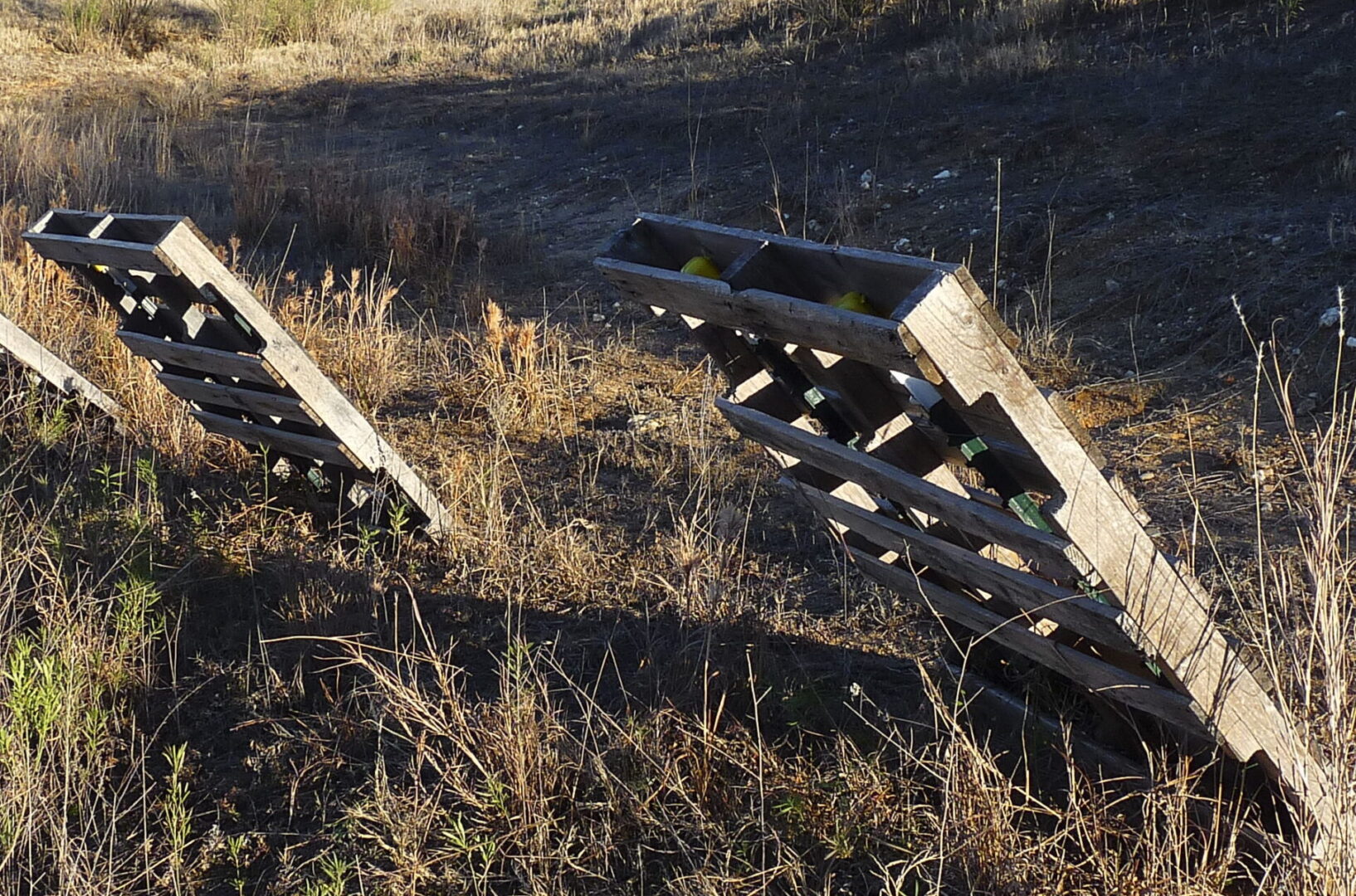
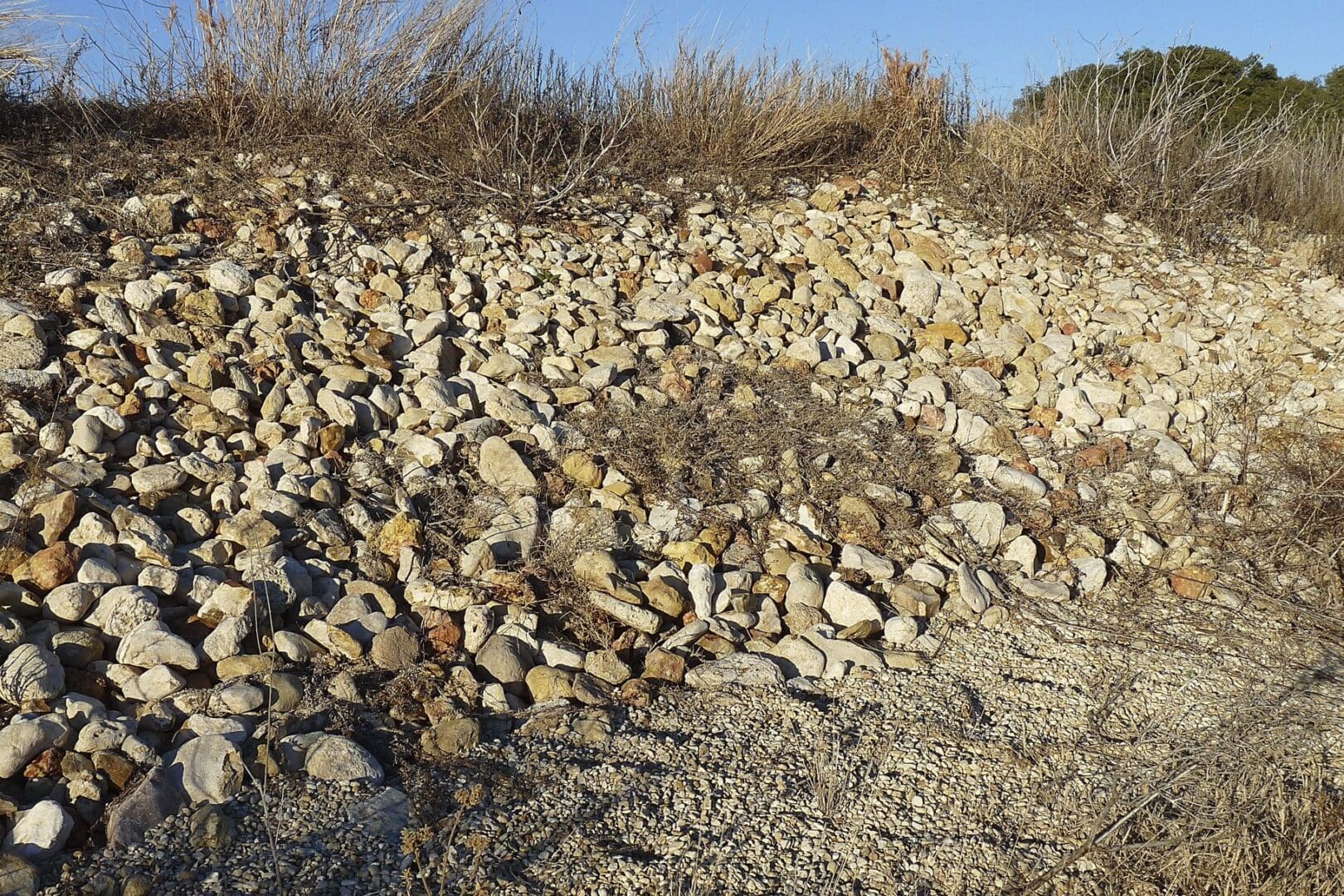
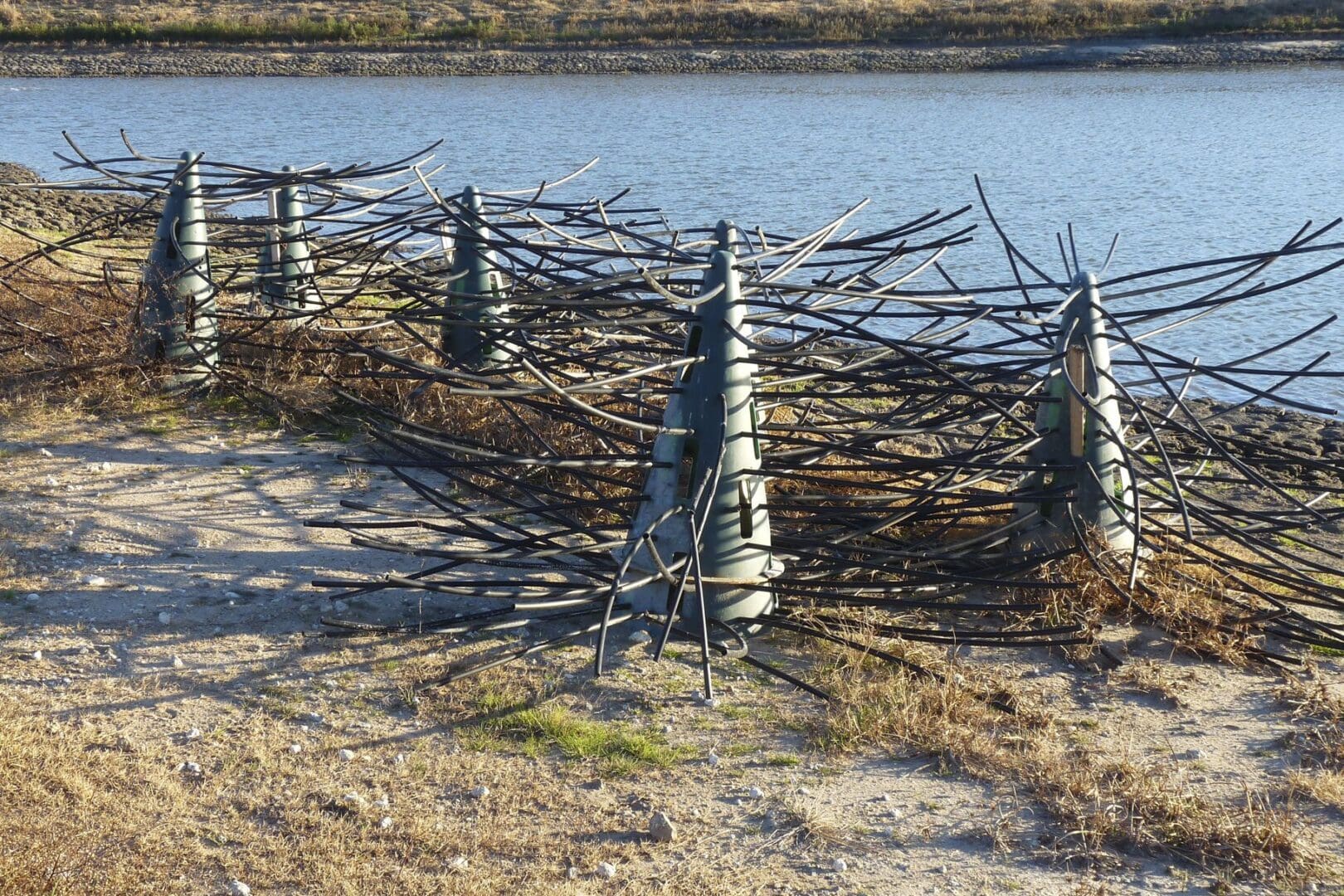

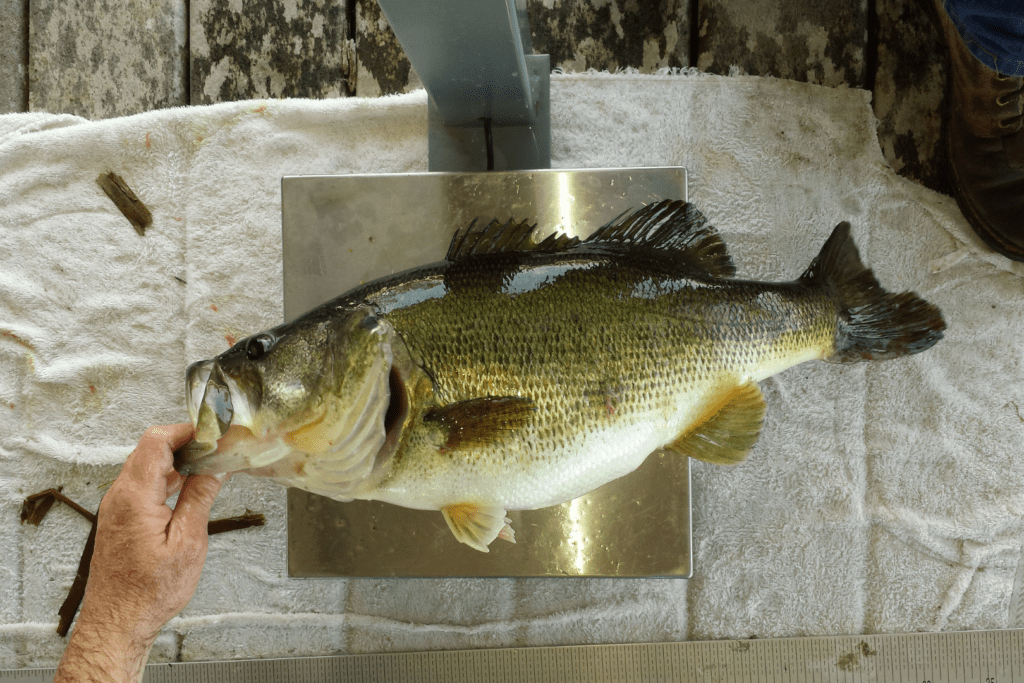
Triploid Grass Carp are a non-reproductive exotic species, which can be stocked into Texas waters with an approved Grass Carp Permit Application from the Texas Parks and Wildlife Department. Triploid Grass Carp are herbivores and can be used as an additional tool to control excessive vegetation or algae. Vollmar Pond and Lake Management is a Texas Parks and Wildlife Department Exotic Species Permit holder and can be your source for Triploid Grass Carp in Texas. We can assist in your Texas Grass Carp Permit Application, from simple assistance to complete "we do it all" application submittals.